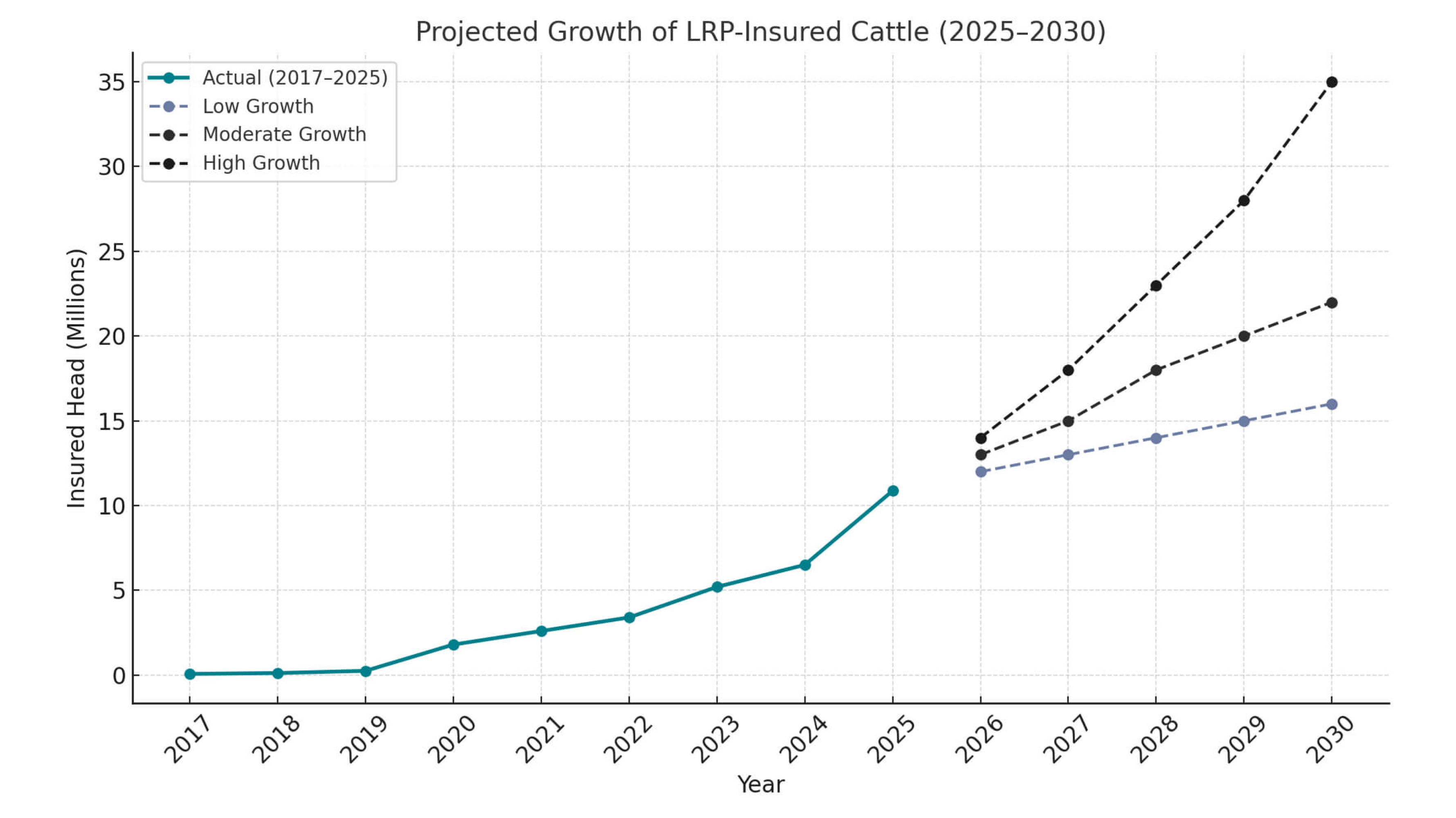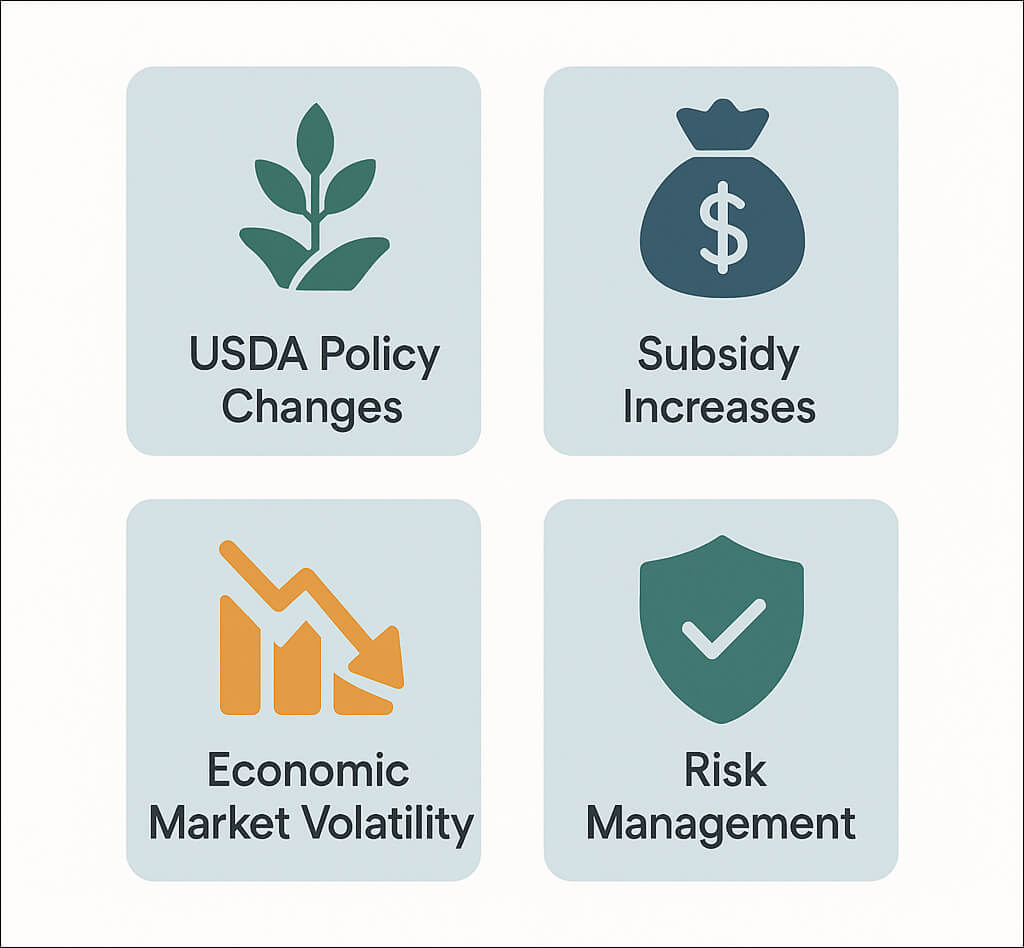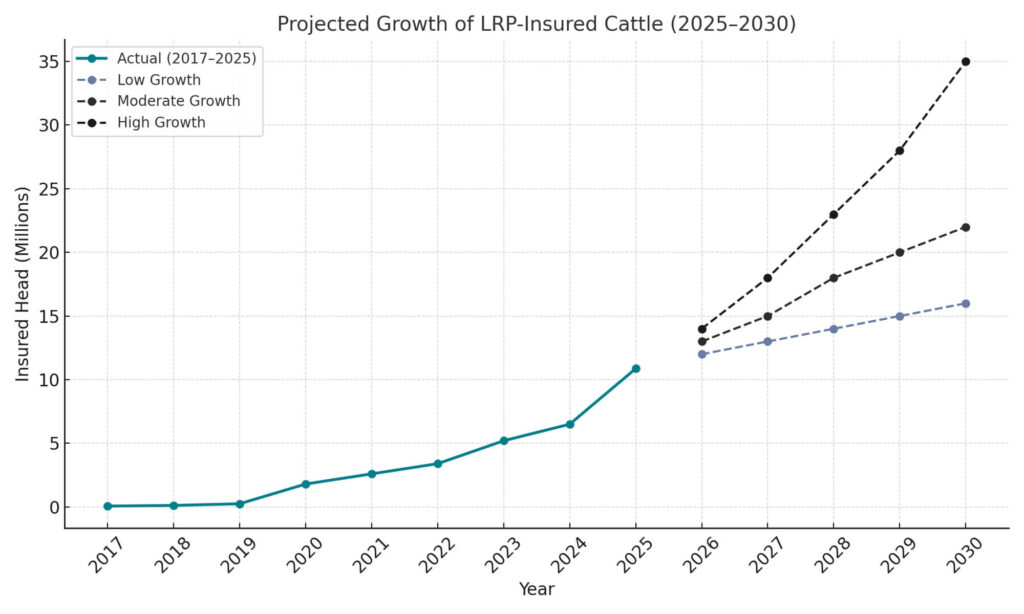USDA Livestock Insurance Adoption: A Deep Dive into Cattle Industry Trends

The United States cattle industry, with over 87 million head, plays a critical role in agriculture and food production. Despite the large size, until recently, the use of livestock insurance programs such as Livestock Risk Protection (LRP) was surprisingly minimal. However, recent USDA data reveal a significant shift in producer adoption rates, marking a transformative period in livestock risk management.
The United States cattle industry, with over 87 million head, plays a critical role in agriculture and food production. Despite the large size, until recently, the use of livestock insurance programs such as Livestock Risk Protection (LRP) was surprisingly minimal. However, recent USDA data reveal a significant shift in producer adoption rates, marking a transformative period in livestock risk management.
Rising Adoption Rates: A New Era for Cattle Insurance
Historically, USDA livestock insurance saw limited participation. In 2017, only around 71,000 cattle were insured through LRP programs nationwide. However, by 2022, this number skyrocketed to approximately 3.4 million head, and further increased to about 5.2 million head in 2023. According to the most recent USDA data, that number climbed to over 10.8 million head in Iowa alone in 2025. This remarkable growth underscores a significant change in how producers view and manage risk.
Key Drivers Behind the Increase
Several factors have driven this rapid adoption:
- Policy Enhancements: Around 2019-2020, USDA improved LRP by significantly raising premium subsidies (up to 55%) and allowing deferred premium payments. These changes dramatically reduced financial barriers for producers.
- Economic Factors: Volatility in cattle prices, especially the historic highs in 2021–2023, motivated ranchers to secure profits and protect against potential downturns.
- Awareness and Education: Increased outreach efforts, such as USDA roadshows and extension education, have heightened awareness and understanding of these beneficial programs.

Regional Patterns and Adoption
Insurance adoption has varied significantly by region. While historically dominated by states such as Nebraska and South Dakota, the latest 2025 data show that states like Iowa (10.8M head), Minnesota (6.4M head), and Nebraska (2.8M head) are leading in total cattle covered. Texas, long considered a cattle powerhouse, insured only 844,566 head, indicating that Midwestern and Eastern Corn Belt states may be leading the way in LRP adoption.
Top States by LRP-Insured Head (2025):
- Iowa: 10.8M
- Minnesota: 6.4M
- Nebraska: 2.8M
- Illinois: 2.5M
- South Dakota: 1.65M
Implications for Producers
For cattle producers, increased insurance use offers significant advantages:
- Financial Stability: Indemnity payments during downturns provide crucial financial support, helping producers weather economic volatility.
- Strategic Planning: Reliable risk management enables better long-term planning, potentially stabilizing herd sizes and market supply.
Looking Ahead: Future of Livestock Insurance
Despite recent growth, significant opportunities remain. Even with Iowa leading at over 10 million head insured, many producers nationwide still operate uninsured. USDA continues to refine its offerings, exemplified by upcoming products such as Weaned Calf Risk Protection, aimed specifically at cow-calf producers.
Image Suggestion: Chart illustrating potential growth scenarios for insurance adoption over the next five years.

Conclusion
The rapid rise in USDA livestock insurance adoption represents a significant shift in the cattle industry's approach to risk management. Producers increasingly recognize the value of insurance, driven by enhanced policies, economic conditions, and educational outreach. This trend promises greater industry resilience and financial security, ultimately benefiting producers, investors, and consumers alike.


